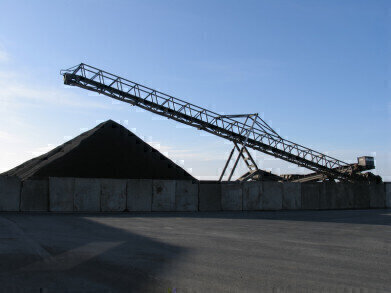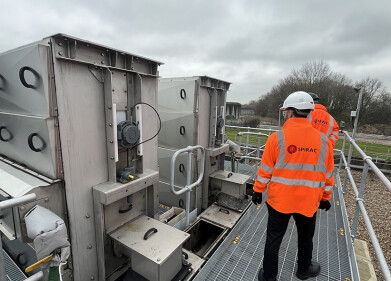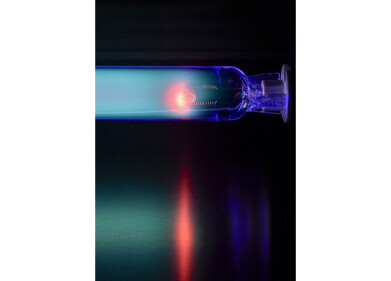Water/Wastewater
KZNR Severe Duty Slurry Pump Lasts Twice as Long as Sewage-Style Dewatering Pump in USA Coal Mine
Nov 17 2011
The Company
The company operates nine coal-mining facilities, including surface and underground mines, in southern Illinois.
The Challenge
Coal is America’s most important source of power. It generates more than 43 percent of all electric utility and industrial power produced in the United States. In 2010, the country’s 1,400 coal mines produced more than one billion short tons of coal. Given that it can take 3,000 gallons of water to extract, process, transport, store and dispose of every ton of coal, safely and efficiently managing the industry’s process and wastewater streams plays an important role in the economics and environmental performance of coal production and use.
Water is a constant presence in and around a coal mine: sprayed water suppresses explosive coal dust; water seeps into mine tunnels; rain percolates through stockpiles of newly mined coal; trucks must be washed before they can be driven on highways. Submersible pumps are installed in many locations at a coal mine: within the mine itself to clear tunnels of accumulated spray water and seepage; in runoff ponds or reclaim tunnels that run under outdoor coal stockpiles; in sumps that collect material that falls off and is washed away from conveyor belts; and in truck-wash sumps.
In most every case, the pumps are required to handle muddy, acidic slurry of water, chunks of coal and coal fines, dust, dirt and rocks. The debris is heavy to pump and quickly wears out standard submersible dewatering pumps. Large pieces of material that fall out of solution usually collect at the intake and will clog or destroy an inferior pump. Coal fines are extremely abrasive to the internal components of a pump and dramatically shorten the life of a traditional pump when used in such harsh conditions.
Coal extractors, processors, transporters and electricity generators have typically used submersible pumps built for sewage to manage water in their operations, usually with poor results. Even the most rugged of these pumps are usually not up to the job, requiring the manual removal of solids from sumps, wastewater pits and holding ponds. Additionally, the failure rate of these pumps in the coal industry’s tough conditions has been consistently high, requiring frequent repair, rebuilding and replacement of pumps; unacceptable rates of downtime; high labor costs; unsafe working conditions and risks of regulatory noncompliance or environmentally destructive spills.
An Illinois coal-mining company was using a sewage-style submersible dewatering pump at the bottom of a 3,000-gallon runoff pond that collects thick slurry draining from several raw and clean coal piles. The water in the pond is so abrasive and acidic that the company was getting no more than six months of use out of each pump.
The Solution
The mine replaced its submersible pump with a BJM KZNR150 Severe Duty Slurry Pump. This 20-horsepower pump with the “R” designation is a toughened version of BJM’s already tough KZN series pumps; it features hardened ductile iron volutes cast with extra thick walls where pumped slurry enters the discharge. Capable of handing more than 1,100 gallons per minute, the KZNR150 is pumping roughly 500 gallons per minute, eight hours a day, at the Illinois mine.
Constructed especially for the thick and abrasive slurries unique to the coal industry, the KZN is an extremely durable, top-discharge pump with a mechanical agitator and wide clearances. Because it has a straight path from intake to discharge, the KZN uses the pumped liquid to cool the motor, and because it does not have an elbow joint like a side-discharge pump, it has fewer surfaces that can wear and potentially fail. Because the pumping components of the KZN—the agitator, impeller and wear plate—are constructed with abrasive-resistant, high-chrome iron, the pump has been a workhorse at the Illinois mine. The KZNRs have lasted twice as long as their predecessors, with benefits in cost savings, uptime and reduced threats of a spill.
MSHA Certification
Of particular concern in coal mines is the danger of an explosion from the ignition of airborne coal dust or methane gas. The mines’ ventilation systems are intended to keep air moving and minimize the risk of ignition within the tunnels. It’s important, however, that the motors of all machinery in a mine be certified by the U.S. Mine Safety and Health Administration (MSHA) and that they do not create sparks that could ignite gas or coal dust. BJM’s standard KZN pumps are appropriate for use in underground settings, but only in non-hazardous locations such as behind the ventilation blowers. To address applications deeper within mines where methane and airborne coal dust are more of a problem, BJM recently developed its HAZ Series of slurry pumps. These pumps feature the same durability and abrasion resistance while performing the same functions as KZNs, but they are MSHA certified. Introduced in January 2011 after five years of development, these are the first MSHA-permissible pumps designed specifically for the coal industry, with hardened metal agitators to handle the industry’s slurries.
Events
May 23 2024 Beijing, China
May 23 2024 Beijing, China
Jun 10 2024 Algiers, Algeria
Jun 10 2024 Frankfurt, Germany
Singapore International Water Week | Water Expo
Jun 18 2024 Singapore














